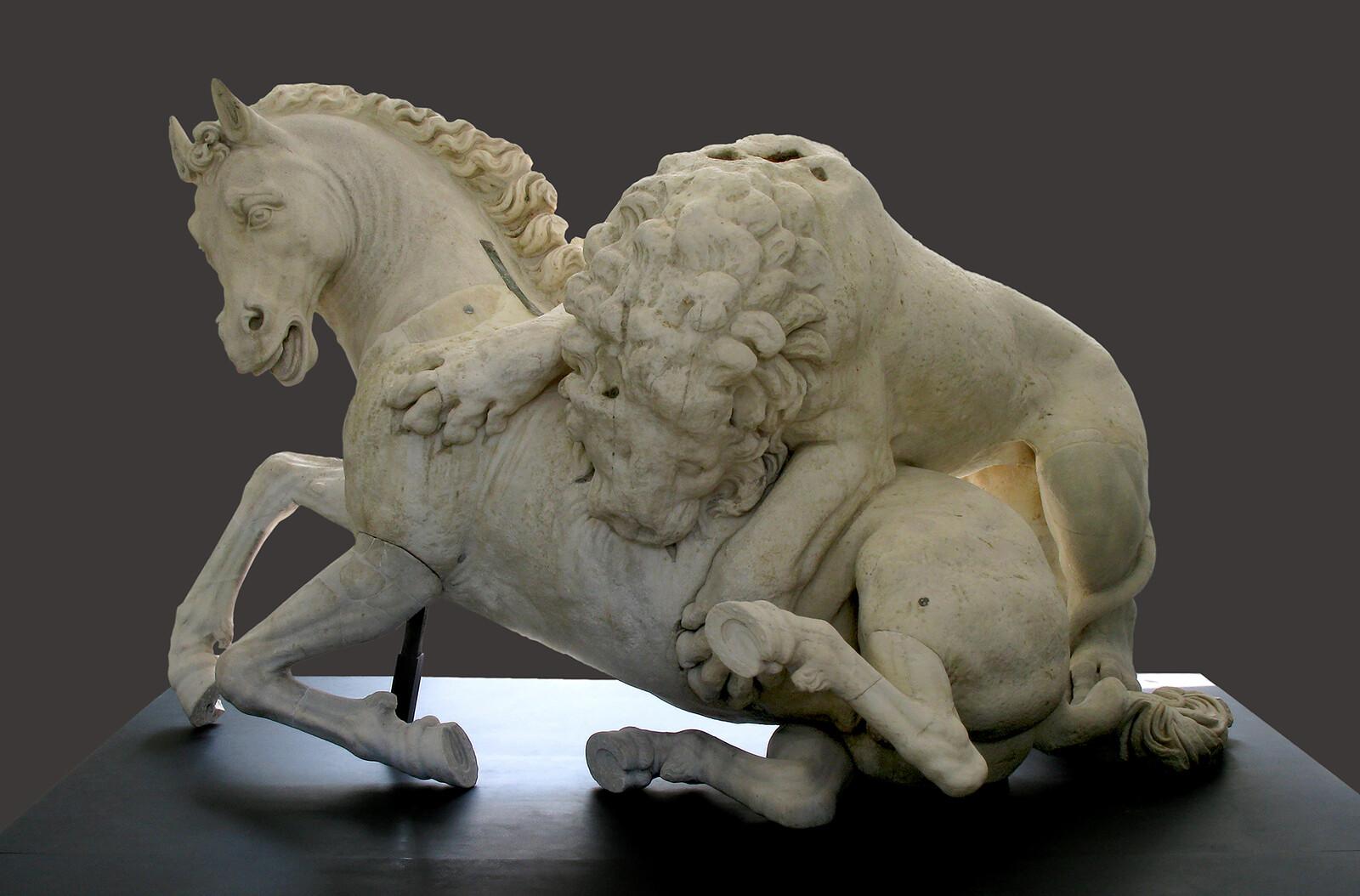November 17, 2022–February 27, 2023
Fondazione Prada presents Recycling Beauty, an exhibition curated by Salvatore Settis with Anna Anguissola and Denise La Monica, in its Milan venue from November 17, 2022 to February 27, 2023 (press preview on Wednesday, November 16). Recycling Beauty, designed by Rem Koolhaas/OMA, is an unprecedented study dedicated entirely to the reuse of Greek and Roman antiquities in post-antique contexts, from the Middle Ages to the Baroque era.
The exhibition is part of a broader investigation undertaken by Fondazione Prada since 2015, when it simultaneously presented Serial Classic and Portable Classic in its Milan and Venice spaces, two exhibitions curated by Salvatore Settis (with Anna Anguissola in Milan, and Davide Gasparotto in Venice) and designed by Rem Koolhaas/OMA. The underlying premise of this research is the need to think of the classical not simply as a legacy of the past, but also as a vital element with the power to affect our present and future. Such themes as seriality, reuse, and recycling in art are closely linked to our conception of modernity, but they also attest to the extraordinary persistence of certain classical values, categories, and models. Through an innovative interpretive approach and experimental exhibition formats, ancient heritage—in particular Greco-Roman heritage—becomes, in Settis’ words, “a key that provides access to the multiplicity of cultures in the contemporary world.”
Despite its cultural relevance and widespread diffusion, the reuse of ancient materials has been studied in depth only recently. In the last few years detailed attention has been devoted to the essential aspect of this phenomenon: the visual and conceptual interaction between the reused ancient elements and the post-Antique context, far from their origin, they became part of. Recycling Beauty, instead, aims to draw attention to the moment when an antique artifact crosses the boundary between its condition of abandonment among ruins and the moment its value is reactivated through its reuse. Each recycled piece thus transforms its new context and is in turn transformed by it, in keeping with an intertextual mechanism of mutual legitimation and attribution of meaning. Exploring the fluidity of meaning of art objects that in time shift their use, reception, and interpretation means to reflect on the unstable and transformative nature of artistic processes.
The exhibition design, conceived by Rem Koolhaas/OMA, together with Giulio Margheri, takes place in two of Fondazione Prada’s buildings—the Podium and the Cisterna—as a process of historical analysis, discovery, and imagination. Parts of the design come from materials from previous exhibitions hosted at Fondazione Prada, adding a spatial dimension to the theme of Recycling Beauty. The scenography in the Podium invites visitors to engage with the exhibits at different speeds. A landscape of low-rise plinths made of acrylic allows for the pieces on display to be perceived as an ensemble, while the cubicle-like structures encourage a closer examination with the presence of office chairs. In the Cisterna, visitors encounter the exhibits gradually, in a sequence of spaces that facilitate observation at different points of view from the height of a balcony to the confined perspective of a room built inside one of the existing rooms. Two rooms in the Cisterna will be dedicated to the colossal statue of Constantine (4th century CE), one of the most important works of late ancient Roman sculpture. Two monumental marble fragments, the right hand and foot—normally displayed in the courtyard of the Palazzo dei Conservatori in Rome—will be placed alongside a full-scale reconstruction of the Colossus. Something that has never been attempted before, this demonstrates how the statue was the outcome of the reworking of an earlier cult statue, probably of Jupiter. This project is the result of collaboration between the Musei Capitolini, Fondazione Prada, and Factum Foundation, with the scientific supervision directed by Claudio Parisi Presicce, the Capitoline Superintendent of Cultural Heritage.
The exhibition includes over fifty highly representative artworks from international and Italian public collections and museums, such as Musée du Louvre in Paris, Kunsthistorisches Museum in Vienna, Ny Carlsberg Glyptotek in Copenhagen, Musei Capitolini, Musei Vaticani, and Galleria Borghese in Rome, Gallerie degli Uffizi in Florence, and Museo Archeologico Nazionale in Naples. Recycling Beauty aims to underline the great artistic and historical value of the works presented, but also to demonstrate how they have experienced migration, transformation, and evolutions of meaning. Highlighting the importance of fragments, reuse, and interpretation, the exhibition helps to consider the past as an unstable phenomenon in constant evolution.



